The Clock Tower, also known as the "Laufer Shock Tower" (Laufer Schlagturm) is a historical gate tower that was part of the penultimate city fortifications of Nuremberg and was also the gateway to the city.
The tower originally dates back to the 13th century and was probably erected in about 1250.
The two upper floors and the reinforcing pillars of the tower were added in 1508.
The name of the Clock tower comes from the fact that the tower has been used as a shock tower since 1440 - a clock with a battle was placed on it.
Today, this tall tower with an arched passage, a clock, niches and a pointed roof is one of the attractions of Nuremberg.
The Clock Tower, together with the White Tower (Weißer Turm) and the Debtors' Tower (Schuldturm), which were originally also part of the city's fortifications, is one of the few surviving towers of its era in Nuremberg.
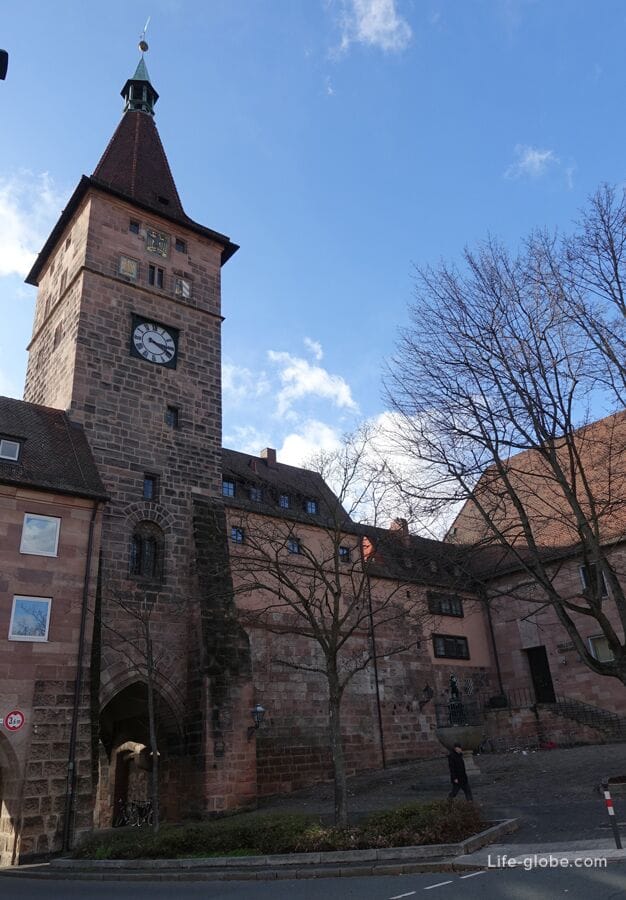
On the north side, a small fragment of the old city defensive wall adjoins the tower.
On the south side is a building with a gable roof and three arched openings (passages), two of which are driveways.
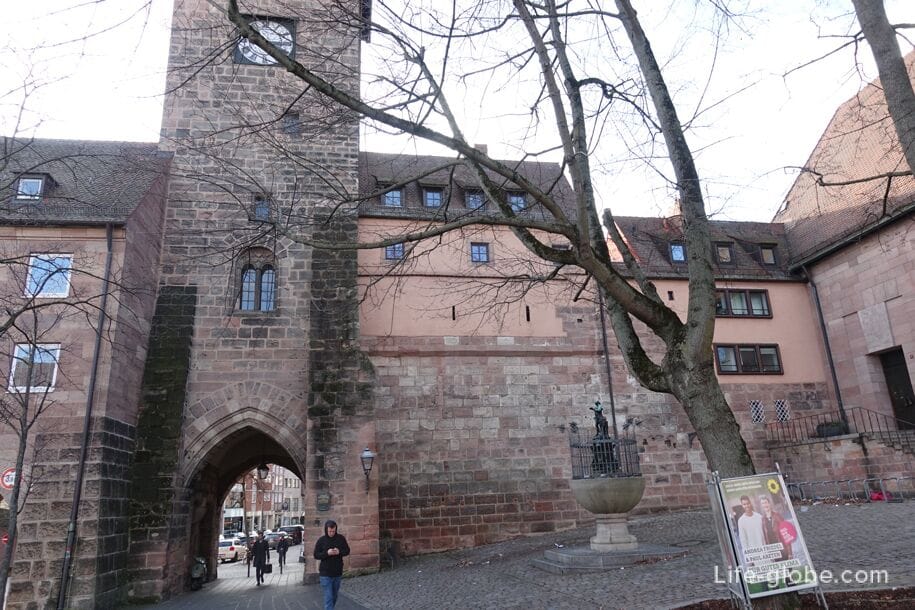
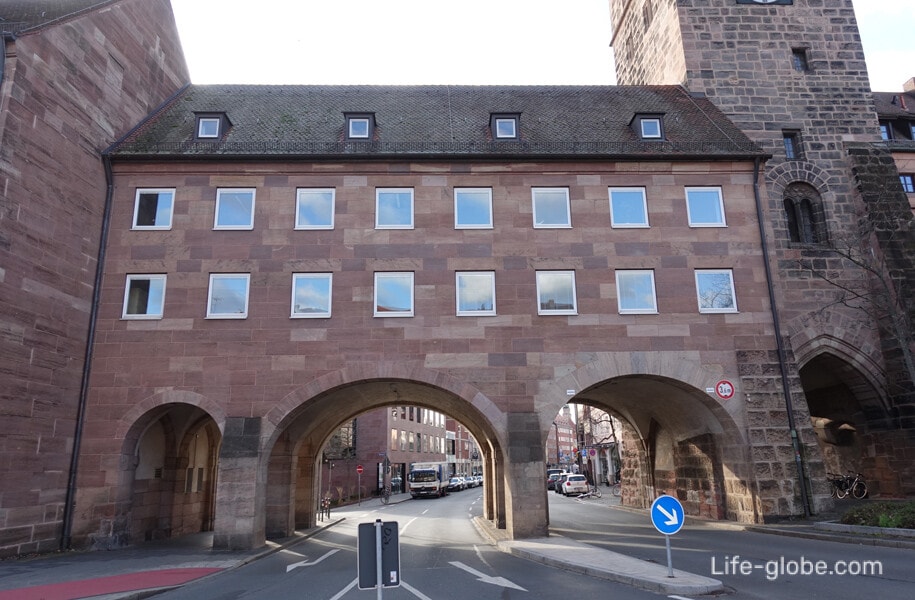

In front of the tower, as part of the ensemble, there are:
- Grübelsbrunnen fountain, dedicated to the Nuremberg folk poet Konrad Grübel (Johann-Konrad Grübel, 1736-1809).
The Rococo fountain was designed by Friedrich Wanderer and installed in 1881;
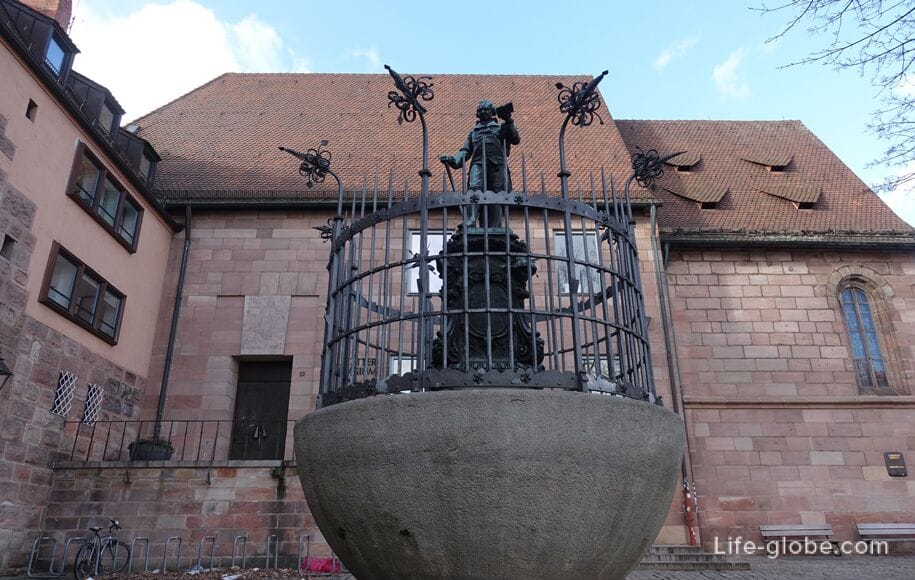
- The Landau Chapel (Landauerkapelle / Landauerkapelle), also known as the Chapel of All Saints (Allerheiligenkapelle) is a late Gothic building built according to the plan of the Nuremberg architect Hans Beheim the Elder between 1501 and 1510 as the chapel of the House of the Twelve Landauer Brothers.
Albrecht Durer created the painting "Adoration of the Holy Trinity", also known as the "Landauer Altar" (Allerheiligenbild, Landauer Altar), in 1511 for the chapel commissioned by Matthias Landauer. The painting is now in the Kunsthistorisches Museum Wien (Kunsthistorisches Museum Wien), the original frame is in The German National Museum in Nuremberg (Germanisches Nationalmuseum). A copy of the painting can be seen in the chapel itself.
In the chapel is the burial place of merchant Matthias Landauer.

"Adoration of the Holy Trinity" by Albrecht Durer
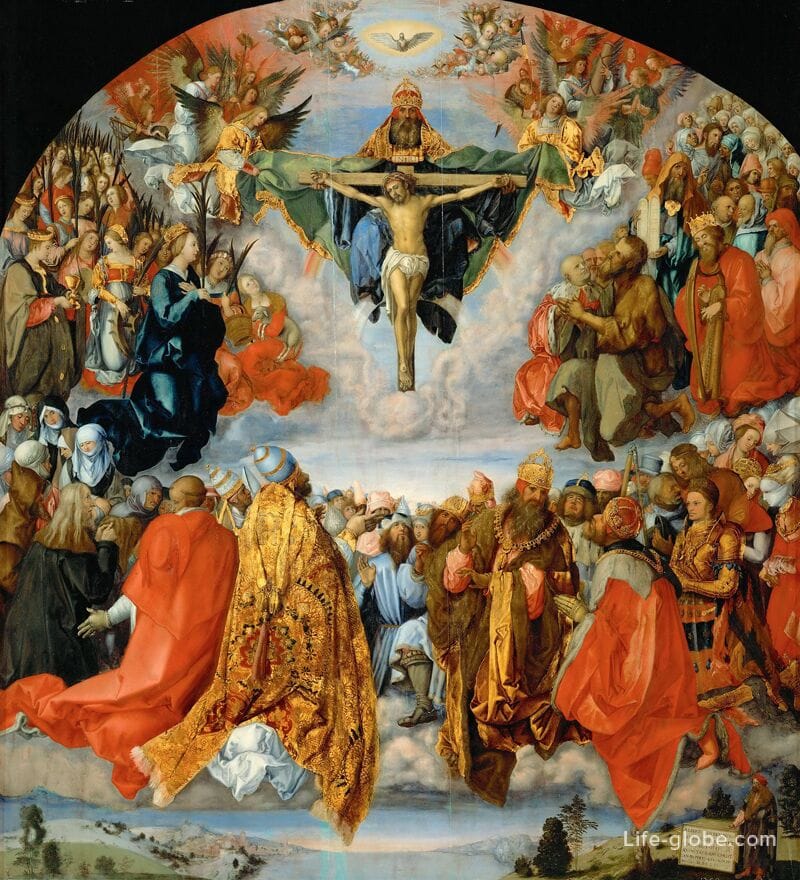
- Willstätter Gymnasium, which is adjacent to the west side of the chapel and was built in 1955-1956 to replace a house destroyed during World War II.
The gymnasium is named after its former student, Richard Willstätter, winner of the Nobel Prize in Chemistry.
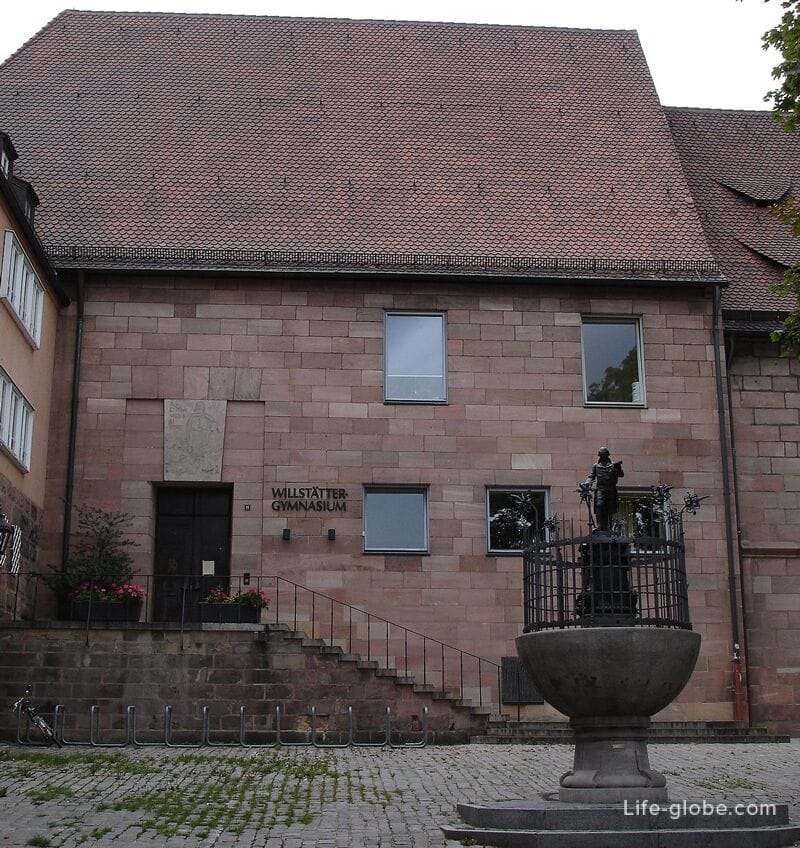
View of the Clock Tower and the adjacent ensemble
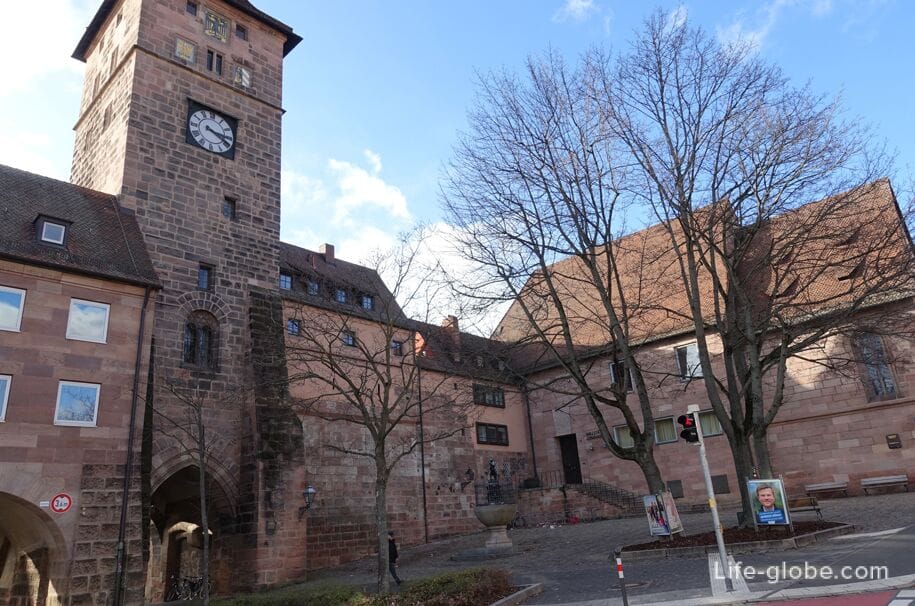
Practical information
The clock tower and the adjacent ensemble are located in the north-eastern part of the historic old town of Nuremberg, on Innerer Laufer Platz.
All accommodation facilities in Nuremberg, including in the city center and near the Clock Tower, can be viewed and booked here








